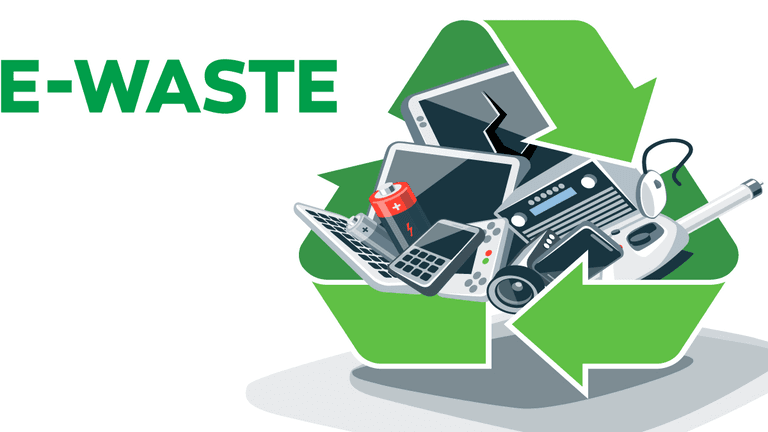How to Maximize Scrap Value During Office Dismantling
Plan Ahead & Organize an Inventory A profitable office dismantling starts with proper planning. Before beginning the dismantling process, create an inventory of materials, including: Furniture (desks, chairs, cabinets, conference tables) Electronic devices (computers, servers, printers, telephones, cables) Fixtures & partitions (glass, aluminum, steel dividers) Air conditioning units & lighting fixtures Wiring, pipes, and metal components Sorting these materials helps identify valuable items that can be sold or repurposed instead of thrown away. Partner with a Trusted Scrap Buyer Choosing a reliable scrap buying company ensures you get the best market rates for your office materials. Companies like We Work Green specialize in transparent scrap buying with competitive pricing, ensuring you get the highest value for your materials. 💡 Tip: Always request a price estimate before dismantling to get an idea of potential returns. Separate High-Value Scrap Not all office waste holds equal value. Focus on items that yield the best scrap value: Copper wiring & pipes – Highly valuable in the scrap market. Aluminum & steel – Found in office chairs, dividers, and window frames. E-waste (computers, servers, batteries) – Components like circuit boards and processors hold significant value. Office furniture (modular workstations, conference tables) – Can be resold or repurposed. Separating these materials in advance helps maximize their resale price. Ensure Secure Data Destruction for IT Equipment If your office dismantling involves IT asset disposal, data security is crucial. Before selling or recycling old hard drives, servers, and laptops, ensure secure data destruction through certified methods like: ✔ Hard drive shredding – Physically destroys storage devices to prevent data breaches. ✔ Data sanitization – Wipes data clean while allowing reuse of devices. We Work Green provides certified data destruction services, ensuring compliance with corporate security policies. Schedule Bulk Pickups for Maximum Convenience Managing large amounts of scrap can be overwhelming. Scheduling a bulk pickup service ensures a smooth and hassle-free process. We Work Green offers customized scrap collection services that align with your office dismantling timeline, reducing downtime and effort. Get a Green Certificate for Sustainability Compliance Beyond financial benefits, office dismantling also contributes to corporate sustainability goals. By partnering with a certified recycling company, you can receive a Green Certificate—an official document proving that your scrap disposal adheres to eco-friendly practices. This certification helps businesses meet CSR (Corporate Social Responsibility) and ESG (Environmental, Social, and Governance) compliance requirements. Sell Directly to Recycling Facilities For maximum returns, businesses can sell scrap directly to recycling facilities, bypassing middlemen. This is particularly beneficial for large-scale dismantling projects with high volumes of scrap metal, plastic, and electronics. We Work Green simplifies this process by offering direct purchase options for bulk corporate scrap, ensuring higher payouts. Real-Life Example: How a Company Profited from Office Dismantling Case Study: TechCorp’s Office Relocation TechCorp, a mid-sized IT firm, planned an office relocation and needed to dismantle their old workspace. Instead of discarding materials, they partnered with We Work Green to maximize scrap value. Here’s how they profited: 📌 Sold office furniture (modular desks, conference tables) – Earned ₹3,00,000 📌 Recycled copper wiring & aluminum partitions – Earned ₹1,50,000 📌 Disposed of old IT equipment with secure data destruction – Earned ₹2,00,000 📌 Received a Green Certificate for sustainable disposal 💰 Total earnings: ₹6,50,000 Instead of spending money on waste removal, TechCorp turned their office dismantling into a revenue-generating process. Conclusion: Turn Your Office Dismantling into a Profitable Venture Office dismantling doesn’t have to be a cost burden. With the right strategies and a trusted recycling partner like We Work Green, businesses can: ✔ Earn maximum value from office scrap ✔ Reduce waste disposal costs ✔ Ensure secure data destruction ✔ Meet sustainability goals with Green Certification By planning ahead, identifying valuable scrap materials, and partnering with a reliable corporate scrap buying service, your business can make office dismantling a profitable and environmentally responsible process. 🔹 Looking to dismantle your office space? Contact We Work Green today for a free scrap evaluation & bulk pickup service! 🔹


